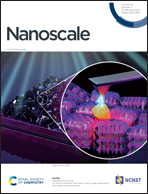Exploring the physical origin of the electrocatalytic performance of an amorphous alloy catalyst via machine learning accelerated DFT study†
Abstract
The amorphous alloy Pd40Ni10Cu30P20 is a rising star as an HER catalyst since it possesses an excellent electrocatalytic activity and a high durability in practical experiments. However, the physical origin of the electrocatalytic performance of the amorphous alloy catalyst is still unclear due to the difficulty of amorphous modelling and the huge cost of DFT calculations. Here, we built a Smooth Overlap of Atomic Positions-Machine Learning (SOAP-ML) model to accelerate the DFT study on the effect of the local atomic environment of the Pd40Ni10Cu30P20 catalyst. Compared to pure DFT-calculated results and experiment, our model makes a good prediction (MSE = 0.018) of the local atomic environment with the best catalysis. We calculated 40 000 active sites on the amorphous alloy surface and obtained the optimal atomic ratio of the alloy catalyst (Pd : Cu : P : Ni = 0.51 : 0.33 : 0.09 : 0.07), indicating that the Pd d electrons mainly enhance the catalytic performance. We employed the SOAP-ML model to reveal the physical origin of the long durability as the dealloying of Ni, which is highly consistent with the experimental results. The above results all prove the high accuracy and reliability of the established SOAP-ML model and provide an appealing idea for the future application of the amorphous alloy.



 Please wait while we load your content...
Please wait while we load your content...